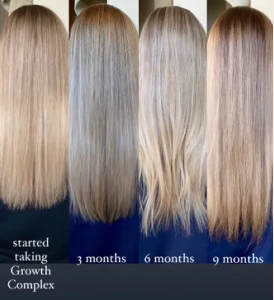Is Oil Cleansing Right For You?
You’ve probably heard of oil cleansing or the Oil Cleansing Method (OCM), but do you still feel a little panicky at the thought of cleansing your face with oil? If so, you’re not alone. For many years it seemed common practice to avoid oils on your face like the plague, especially if you suffered from oily skin or acne. But the things you’ve heard and feared about oil are simply not true. And with time, I think you too can come around and start benefiting from all the goodness oils can provide.
I know for myself personally that the goal in my teen years was to get my acneic skin as squeaky-clean as possible, but looking back I realize I was actually doing myself a major disservice. My use of harsh astringents and water-based cleansers were actually stripping my skin of all my healthy bacteria, natural oils and exacerbating irritation and inflammation in the process. Even worse, because my barrier function was now compromised, my skin went into oil-production overdrive, adding to the very problem I was trying to solve. Oil cleansers, on the other hand, cleanse without stripping your skin and can remove dirt, makeup, pollutants, and excess sebum while leaving your barrier function intact. Think of it in terms of “like attracts like” where oils are attracted to other oils and also that “oil and water don’t mix” so your skin’s hydration isn’t bothered.
To understand more clearly, a quick biology lesson is in order. Think of your epidermis like a brick house where your cells are the bricks and the mortar is the moisture barrier. Harsh cleansers and astringents break down the moisture barrier, which leads to TEWL (Transepidermal Water Loss) and can cause redness, dryness, irritation and myriad other potential issues. One way to avoid this is to use oil cleansers and topical oils tailored to your skin type. Oil cleansing also softens hardened pores and helps release clogged sebum. Massaging the skin helps increase circulation which encourages lymphatic drainage and gives you a healthy glow. Oils supplement and strengthen the moisture barrier by replenishing lipid function and sealing in precious moisture within the skin. Win-win.
So, if you’re wondering where to start, it’s actually quite simple. First you’ll need to choose your oil(s). Individual oils or blends can be used. You can make your own or purchase from your favorite skincare brand. You’ll want to choose according to your skin type and condition.
Oily: Grapeseed, pumpkin, sunflower
Acneic: Jojoba, Hemp, Castor, Argan, Marula. Avoid: Coconut, cocoa, shea, palm and flaxseed
Sensitive: Camellia, Rosehip, Jojoba. Avoid: Castor. Its antibacterial properties may irritate.
Dry: Avocado, Extra Virgin Olive Oil, Almond. Coconut oil may work for you as well.
Never use vegetable, canola or corn oil. If you’re using or mixing oils from your kitchen, always use organic, cold-pressed and unrefined varieties. When purchasing, look for only plant/nut-based oils and avoid any synthetic varieties. Avoid blends containing petrolatum and mineral oil as these can clog pores. Whatever you choose, it’s worth noting that starting an oil cleanse regimen can lead to purging of the skin (1-2 weeks of mild breakouts, dryness or irritation). This is normal and your skin will acclimate. However, if you experience itchy, inflamed skin or increased irritation, stop immediately and re-evaluate as this could mean you’re having an allergic reaction.
Now it’s time to cleanse. Simply massage a few drops on dry skin for anywhere from 30 seconds to 2 minutes. Gently remove with a warm washcloth or reusable microfiber round. Some people may want to go the K-Beauty route and do a double cleanse with a gentle water or gel-based cleanser. Pat dry and follow with your finishing products.
Something to keep in mind however, is that oil cannot hydrate your skin. Hydration in this context means containing or adding water to your skin. Oil is hydrophobic, meaning, it runs away from and does not contain water. Oil can help moisturize your skin however because it helps retain hydration in your skin. Oil molecules are the largest of the skincare bunch. It is occlusive by nature, meaning it sits atop and does not absorb into your skin. What it can do is help hold in the hydration already within your skin and from your other products. This is why face oils or oil-containing moisturizers should be applied last. If you apply your oils first, not only are you not hydrating your skin, you restrict any other applied products from being absorbed into your skin because they cannot penetrate the oil. Facial oils should also be chosen based on skin type but a few oils beneficial for everyone include calming rosehip oil, moisturizing squalane, and healing argan oil. I love our Nourish+Repair Serum because it works double duty for hair and skin; calming frizz and improving hair growth while also healing acneic or irritated skin while also providing added protection from the sun.
If you’re not ready to ditch your current routine but want to dip your toes, there are other products on the market that contain, but aren’t strictly oil cleansers that can also be great for your skin such as oil-to-milk cleansers and cleansing balms. Most beauty brands have a formulation of their own so you won’t have to look too hard to find one that works for you.



























